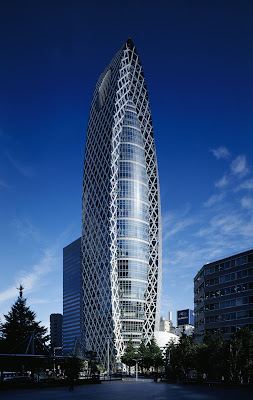The term "skyscraper" was coined in the 1880s, shortly after the
first tall buildings were constructed in the United States -- but the
history of tall buildings dates back hundreds of years. Since the Middle
Ages, engineers have engaged in a battle for the sky.
Before there were skyscrapers, there were towers.
Made of heavy stone, towers had thick, sturdy walls, but the rooms were dark and cramped -- too many windows would have weakened the structure.
Made of heavy stone, towers had thick, sturdy walls, but the rooms were dark and cramped -- too many windows would have weakened the structure.
Soon Gothic cathedrals joined the quest for height.
Long, stone arms, called flying buttresses, supported the cathedral's heavy weight, allowing the walls to be filled with colorful glass windows.
Long, stone arms, called flying buttresses, supported the cathedral's heavy weight, allowing the walls to be filled with colorful glass windows.
With steel came the first modern skyscrapers.
During the Industrial Revolution, engineers began experimenting with two new materials -- iron and steel. The 10-story Home Insurance Building in Chicago was the first tall building to be supported by a steel skeleton of vertical columns and horizontal beams. But even with windows, the closely spaced columns and deep beams made rooms in the Home Insurance Building feel tight and cramped.
During the Industrial Revolution, engineers began experimenting with two new materials -- iron and steel. The 10-story Home Insurance Building in Chicago was the first tall building to be supported by a steel skeleton of vertical columns and horizontal beams. But even with windows, the closely spaced columns and deep beams made rooms in the Home Insurance Building feel tight and cramped.
In 1857, the installation of the first passenger elevator in the
Haughwout Department Store in New York City made it possible and
practical to construct buildings more than four or five stories tall.
New structural designs made skyscrapers even lighter and stiffer.
As skyscrapers grew taller and taller, engineers were faced with a new enemy: wind. Today's tallest skyscrapers, which are almost 1,500 feet tall, must be 50 times stronger against wind than the typical 200-foot buildings of the 1940s.
As skyscrapers grew taller and taller, engineers were faced with a new enemy: wind. Today's tallest skyscrapers, which are almost 1,500 feet tall, must be 50 times stronger against wind than the typical 200-foot buildings of the 1940s.
Today, the sky's the limit!
As architects and engineers experiment with new styles and building methods, taller and more innovative structures are springing up around the world. The tallest buildings in the world, the Petronas Towers in Malaysia, are connected by a flexible skybridge on the 42nd floor -- a design that improves the circulation of people between the towers and provides an escape route from one tower to the other in case of emergency.
As architects and engineers experiment with new styles and building methods, taller and more innovative structures are springing up around the world. The tallest buildings in the world, the Petronas Towers in Malaysia, are connected by a flexible skybridge on the 42nd floor -- a design that improves the circulation of people between the towers and provides an escape route from one tower to the other in case of emergency.



Nema komentara:
Objavi komentar